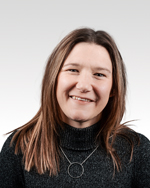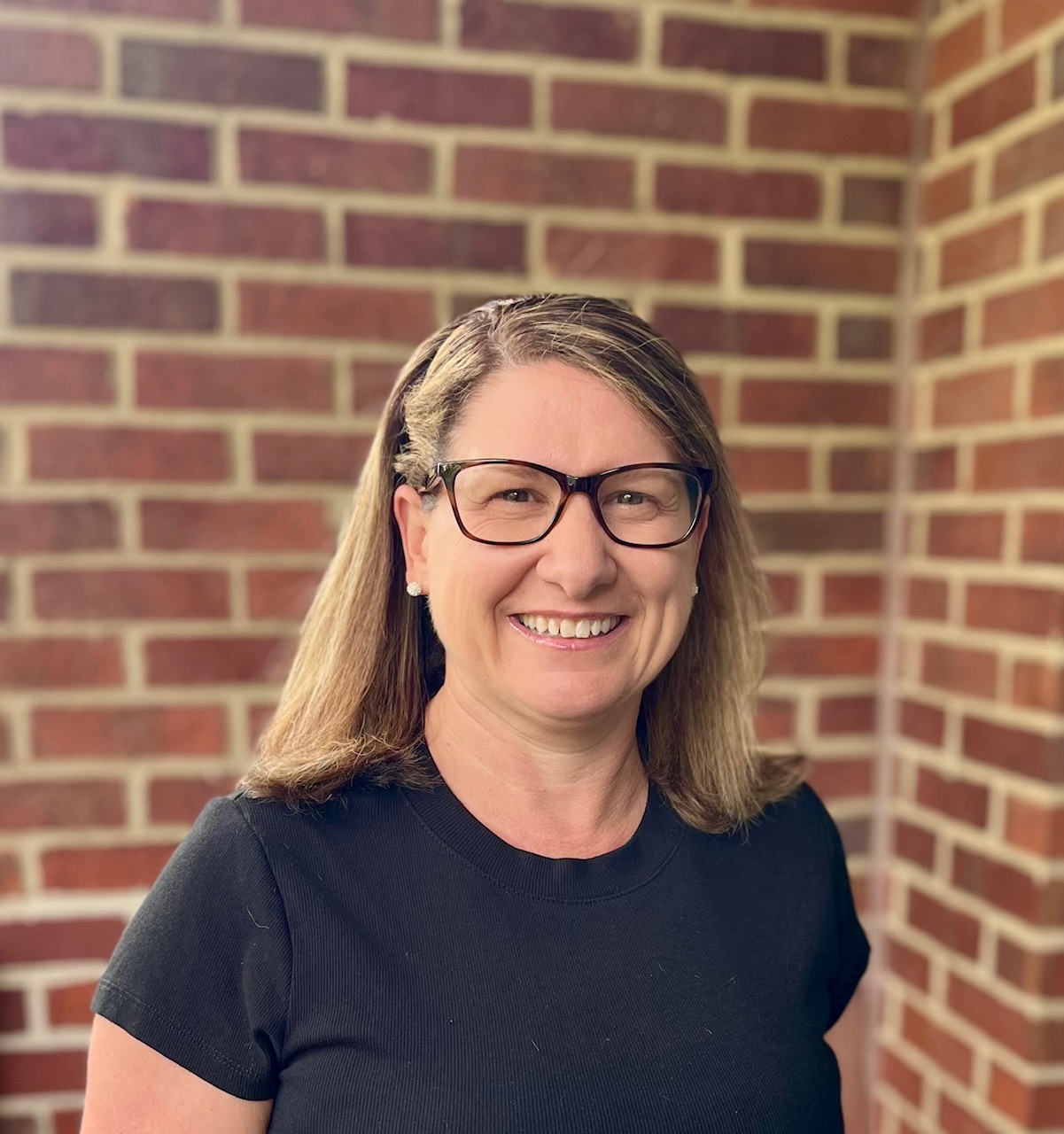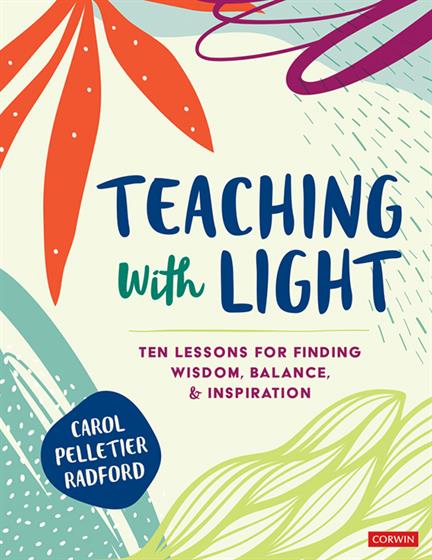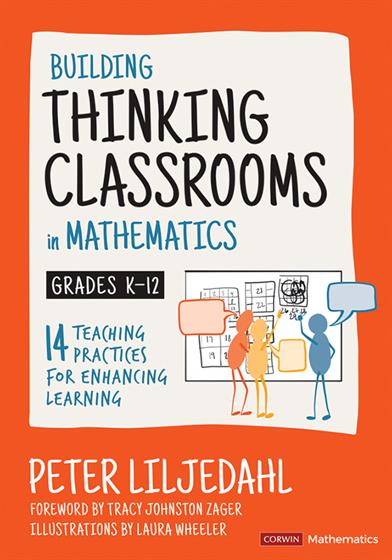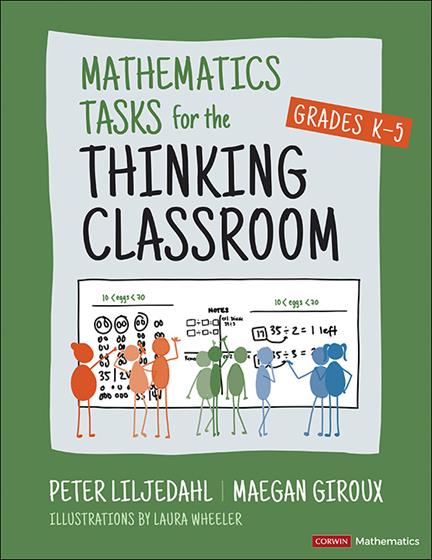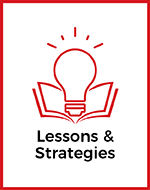[00:00:03.10] SPEAKER: Welcome to Corwin's Teacher to Teacher podcast, with
host Carol Pelletier Radford. Carol is an experienced classroom teacher and
university educator, founder of mentoring in action.com, and author of four
bestselling professional books for teachers. She believes the best form of
professional learning happens when teachers engage in authentic conversations
and share their wisdom.
[00:00:23.99] In every episode, Carol and her guests share stories about
pivotal moments in their careers, successful classroom strategies, and personal
actions they take to minimize stress and stay healthy. The Teacher to Teacher
podcast is a place to engage in authentic conversation and reflection with
experienced educators. We hope these conversations will energize you, keep you
inspired, and remind you why you chose to become a teacher.
[00:00:49.12] CAROL PELLETIER RADFORD: Welcome to season 3 of the Teacher to
Teacher podcast. I am your host, Carol Pelletier Radford, and I'm happy to be
part of this conversation, with two very experienced educators that you will
thoroughly enjoy. The theme for season 3 is based on the book that I wrote,
titled Teaching with Light, 10 Lessons for Finding Wisdom, Balance, and
Inspiration.
[00:01:15.80] Each of the 10 episodes for this season mirror the 10 lessons
in the book. So today's episode is lesson 3, Be a Lamp, Not a Mirror. And let's
begin the conversation by having our guests introduce themselves to all of you.
Welcome, Maegan and Kathryn. Kathryn, introduce yourself, and tell me,
currently, what your role is in education, and what did you teach when you were
teaching?
[00:01:50.50] KATHRYN SHUPE: Hello. I'm Kathryn Shupe, and I'm currently a
new teacher support coordinator in Charlotte, North Carolina, and I have been
working with new teachers for the past six years. When I was a classroom
teacher, I taught kindergarten first, second, and third grade. First grade was
my favorite grade to teach because I love seeing kids learn how to read.
[00:02:18.34] CAROL PELLETIER RADFORD: Magic-- big magic.
[00:02:20.60] KATHRYN SHUPE: Yes. And Maegan, welcome.
[00:02:24.61] MAEGAN GIROUX: Hi. Yeah, so my name is Maegan Giroux, and I am
a-- I guess, first, I am from Regina, Saskatchewan, Canada, and I am a
half-time math teacher and half-time instructional coach, I guess, is what you
guys would call that down in the states. And so my math coaching or my math
teaching is I'm teaching kindergarten, and I'm grade six and seven.
[00:02:53.67] So I do a split grade six seven and then do a kindergarten.
And then for my instructional coaching, I support teachers K to 8 with numeracy
and literacy. I have to be here.
[00:03:04.58] CAROL PELLETIER RADFORD: Wow, you have a wide variety of
experience, and you're both working in the mentoring/coaching as well. We never
know when we make these matches, how our two guests, teacher to teacher, going
to intersect? So this is perfect. Here's the question that I have for both of
you.
[00:03:24.93] The be a lamp, not a mirror, that is a phrase that I have used
in my book and in my life, where I have mirrored back, sometimes, negative
people's reactions instead of looking to my own light to be a little more
positive. So it means that to me. But I noticed, as I share it, that it means
slightly different things to different people. So Kathryn, share what you think
that phrase means, and then share a little story or a pivotal moment that
relates to that.
[00:04:07.85] KATHRYN SHUPE: Yeah so for me, being a lamp really means
shining light into others and being that light that others can see, just to
help guide them and to help lead and keep them going through education. A
pivotal moment for me was over the past four to five years in my role, I've
mentored and supported a lot of teachers.
[00:04:37.42] But there came a time in my life where grief hits, and I lost
my dad. And there was a lot of-- a lot of things happened. And so I had to
really shift my work of what I was doing to reignite my light, because my light
was becoming dim. And so I turn to my beginning teachers that I support to
reignite my light and to really fill me up.
[00:05:11.33] And so one teacher, in particular, her name is Vanessa. And
Vanessa is a first grade teacher, and she was teaching in a high poverty
school, and her students were all below grade level. But walking into her
classroom, it was a ray of sunshine. And I began to visit her class more than
once a week, because I needed it. I needed her more than she knew.
[00:05:40.01] And that reflection of her light and love just filled my heart
with joy and allowed me to then share that back with everyone else. So Vanessa
was really my pivotal person that just kept me going and allowed me to really
shine bright.
[00:06:01.20] CAROL PELLETIER RADFORD: I see. What you're saying is so
important. Because as mentors and coaches and instructional leaders, I think
people look to us to always have the answer so that they don't always see us as
being vulnerable in our own roles and being uncertain as to what to do next. We
may have a little bit more experience, but we have life. Life happens to us,
the same way it happens to everyone.
[00:06:29.76] And I think I appreciate your story, Kathryn, because it's
important for us to articulate this on this podcast, in Teacher to Teacher that
no one really is failing. We're trying to stay inspired and keep that light, so
we can share it. And it's so interesting to have the novice teacher ignite you,
and I love that. What did you think about that, Maegan, that story? Does it
resonate with you, before you share your story?
[00:07:05.11] MAEGAN GIROUX: Yeah. I would say that, that actually resonates
quite a bit. Because I think that one of the things, when you talk about being
a lamp, not a mirror, is finding the lamps in the unexpected places, right? And
so I find that when I consider my version of being a lamp, not a mirror, it has
a lot to do with the fact that the mirrors are usually people who are, maybe,
not comfortable in owning up their own light, like Kathryn's novice teacher,
right? So they would be used to being a mirror versus being their own lamp,
which is how I would also resonate with that as well.
[00:07:44.53] CAROL PELLETIER RADFORD: Yeah, what's your story? What can you
share about feeling that way or noticing either your light dimming or that you
couldn't find it or-- how'd you spark it up, Maegan?
[00:08:01.06] MAEGAN GIROUX: Well, yeah. So I guess, I would say the first
way that I look at it is probably from my students, because I think that when
we talk about being a mirror, I think our students are often being told to be
mirrors. We just tell them things, and then they just bounce back and mimic or
regurgitate back exactly what we just said.
[00:08:24.14] And they, oftentimes, don't have their own light. Well, they
do, but we don't always allow them, and myself included, don't always allow
them a chance to shine bright. And so I think that-- especially my school. My
school has about 85% of my students were not born in Canada. So they are very
used to being a marginalized community where they don't shine their light.
[00:08:46.97] And so for me, I think just the ways in which I've shifted my
teaching, which I will talk about more later, has really been able to have my
students be the light instead of the mirrors. And for myself, I think I have to
credit Peter Liljedahl for allowing me to become a lamp myself. Because I've
been spreading his great news for a few years and lots of people's great stuff
for so long.
[00:09:13.80] But he's really-- since co-authoring the book, he's put me
into the lamp position. And even a few months ago, we were in Kingston,
Ontario. And Peter, who is very well known within the mathematics community,
wanted-- some girl wanted a picture with me. And so, then, he took that photo,
which was so funny. I am usually his like lackey.
[00:09:40.23] And then he was like, yeah, like I'm-- yeah. And then Peter
was super supportive. And so that's been nice as a younger woman in this math
and space to be more comfortable sharing my light instead of reflecting other
people's light.
[00:09:55.97] CAROL PELLETIER RADFORD: I love that. Thank you.
Congratulations. That is so awesome. And co-authoring also has a shared light,
because you're sparking each other and that creativity. Kathryn, what'd you
think of that story?
[00:10:12.50] KATHRYN SHUPE: I love it. Yeah. Yes, totally. I mean, I love
that thinking about being a ramp and just really finding those people who have
that bright, shining light, that you can just naturally go to. And people are
naturally drawn to you because they see the light in you.
[00:10:33.27] CAROL PELLETIER RADFORD: Yes. And I was thinking, as you were
talking, Maegan, about the student teachers in that mirror angle. They,
sometimes, just want to copy what the mentor teacher is doing. And they have to
find their own way, like within a pedagogical framework, of course, to express
themselves. And I've worked with a lot of student teachers, and all of you have
beginning teachers, worked with them.
[00:11:02.99] And sometimes, they would just say, how did you do that? They
want to mirror back. And with some mirroring or mimicking or whatever we want
to call it, within our parameter is OK, I guess, when we're teaching teachers
how to hand out materials for apps or whatever. But then I always go back to--
they have to find their own way to say it.
[00:11:31.13] They can't just mimic back. So I appreciate Maegan, though,
that you talked about the students. And let's continue that a little bit with
some more detail of your book, your co-authoring of your book, and what it's
about. Why does everybody want to read this book? And yeah, we'll dig in a
little bit and get some practical ideas that even maybe non-math teachers could
use, right? All right, let's hear it.
[00:12:04.67] MAEGAN GIROUX: The name of it is Mathematics Tasks for the
Thinking Classroom K to 5, which is more specific, and just looks through
mathematics tasks through a elementary lens, which I think is important as
somebody who has spent a lot of time in that elementary area. Because I think
that-- I think that the high school math gets all of the credit. And I just
think foundational years are so important.
[00:12:32.87] However, I do also know, because my friends and colleagues are
literacy, they also have so much to focus on for literacy. And oftentimes, we
just don't have the time to focus on math. So this book is the follow up book
from his bestselling mathematics book, Building Thinking Classrooms K to 12,
where Peter puts into words these 14 practices that are the most optimal for
student thinking that is in mathematics, but I think beyond.
[00:13:05.91] And then what this new book does is the first part is just
looking at all of the updated research because his original book came out in
2020. And four years is four years, which is a long time in math ed. And so the
first part is just looking through what has changed, what has been updated. And
then part 2 and 3 are tasks. The first part 2 is 20 non-curricular tasks. And
then 3 part three is 30 curricular tasks.
[00:13:41.35] But then, part 4, I think, is where the really beautiful part
comes. Because part 4 is all about how to make your own tasks. But also, they
want to know how to make their own tasks, and then how to build capacity. So
part 4 is all about how to build your own tasks, and then how to take a great
idea and then put it into practice. So a few of Peter's practices are using
rich tasks which are deeper tasks.
[00:14:08.67] CAROL PELLETIER RADFORD: All right, what's a task? Give me a
task. Give me a good task. Give me a medium task.
[00:14:15.48] MAEGAN GIROUX: Yeah.
[00:14:18.22] CAROL PELLETIER RADFORD: Example, what's a task?
[00:14:20.52] MAEGAN GIROUX: I am having a dinner party this weekend. Can
you guys be my party planners? And they're like, yeah, for sure, because K to 5
kids are excited about literally everything.
[00:14:28.56] CAROL PELLETIER RADFORD: Yes.
[00:14:29.37] MAEGAN GIROUX: And then you say something along the lines of,
OK, well, there are 12 people coming. How could I arrange the tables, if these
things are in place, which is that, on every table is full and that every table
has the same number of seats. And then they go, and then they all try out
different things.
[00:14:51.33] And some kids draw, some kids use multiplication, some kids
use repeated addition, some kids skip count. And it's just these divergent rich
tasks which just allow the kids to build conceptual understanding of the math,
deepens their learning, while also allowing them to be a light of the
mathematics, right?
[00:15:11.80] CAROL PELLETIER RADFORD: Yes. Yes. They are creating. So their
creativity.
[00:15:15.87] MAEGAN GIROUX: They are creating. They are sharing their
light. So that would be one example. But, yeah. But on Peter's framework, which
is phenomenal, is all about these 14 practices, which also include working on
vertical non-permanent surfaces, which are whiteboards or windows, stuff like
that. And then having frequently visibly random groups, which is really scary
for some teachers to make random groups.
[00:15:41.98] It's really, really, really important. And that is all
outlined in the original orange book. However, this book really just gives
practical things to do from, literally, a launch-- from a launch script, all
the way down to, how would you consolidate everyone's learning? How would you
bring it all together in the end to formalize it?
[00:16:05.82] CAROL PELLETIER RADFORD: Love it, love it.
[00:16:07.05] MAEGAN GIROUX: It's really, really step by step so that,
hopefully, by the end, everybody can walk away and just have a good
understanding of how to build their own thinking classroom.
[00:16:15.43] CAROL PELLETIER RADFORD: And it's just great pedagogy. So
what's different about this, these problems, tasks, whatever. There's no right
way to do it. The students get to generate that creative problem solving, and
you're mapping out for the teachers a variety of ways, so they don't have to
think of the task right away, if they don't want to.
[00:16:39.53] You're giving that. I think that relates a bit to your work
with beginning teachers, too, Kathryn. How do we take the big ideas from this
very specific math k-12 book and apply it to your situation as a coach? Does it
connect at all?
[00:17:00.77] KATHRYN SHUPE: It does. It definitely does. I mean, when we
think about tasks and about giving people their autonomy to choose their
strategy and to choose how they're going to solve, right? So it really lends
into the work that I've done, as far as more on the social emotional side. So
as Maegan's really focused on content-based things into skill development, my
work has been around a lot of that social-emotional and wellness side of things
to help people balance out.
[00:17:35.13] Because over the past few years, really, my awareness has been
folks just need a holistic approach to education. And so I have-- after I've
received Carol's book, Teaching with Light, a couple of years ago and started
reading these lessons, I really began to infuse them into the professional
development I was creating.
[00:17:58.72] And so there's one training that we created this year. It was
called the Joy Factor. And in the Joy Factor, we took an intentional approach
to the why-- to coming back to your why. What is your why of being a teacher,
and really focusing in on teacher wellness. And within that session, the big
ideas were mindfulness, gratitude, and reflection.
[00:18:28.83] And the teachers were able to write a thank you note and show
gratitude to their mentors. They were able to really take some reflection and
reflect onto where they were, where they're starting, and where they want to
go, and just really come into like a zen space. And as I think about being a
lamp versus a mirror, this allowed them to shine their light as educators and
as new teachers to give back to others.
[00:19:02.94] CAROL PELLETIER RADFORD: Thank you. Thanks for that. I think,
Maegan, I think when I heard you talk about the random groups as one of the
frameworks, I want to dig into that a little bit more. Because it seems so
easy. And yet, teachers are afraid of it a little bit, but it relates to what
Kat's talking about the social and emotional piece.
[00:19:32.11] Because, then, when the students see the teacher not playing
favorites or intentionally putting so-and-so with so-and-so or however teachers
intentionally do things, I don't know. What do you think about how does that
relate to social wellness with the kids? Just the random group one. What's the
research say, and what is your feeling as a teacher-coach about that one
framework?
[00:20:06.68] MAEGAN GIROUX: Yeah. So when Peter and his crew were
originally doing the research, which was done over 15 years, with about 400
plus teachers and 400-plus classrooms, and what had happened was that they
found that there was two most-- there was two dominant ways to make pairings or
groupings within math and just them overall.
[00:20:30.33] And that was teacher-selected or self-selected.
Teacher-selected is more found in the K to 5, where it's like, well, Timmy's a
meklau, so I can put him with Susie will keep him on track. And then the
self-selected, that happened more in the middle years to upper high school
which is just partner up, find three people, whatever.
[00:20:51.99] CAROL PELLETIER RADFORD: Right. Right.
[00:20:54.66] MAEGAN GIROUX: Yeah. And then what they actually found was
that both ways didn't stop students from thinking. Because whether the teacher
selected or whether they selected, they knew their role in the group, and that
was likely not to think. So then one person would do everything, and then
everybody else would do all of those different things. Yeah. And then, when
they-- and I can't quite remember the exact percentage.
[00:21:24.46] But when they like asked kids at the beginning, it was like
significantly less than 50% of kids were not willing to provide an idea, even
though they thought it might lead to a correct solution. But then after about
two to three weeks of frequently, visibly random groups, I think it was up to
like 90% or 100% of students were like willing to provide an idea, even though
most of them thought it might not lead to a solution. So students were just
willing to participate.
[00:22:04.09] CAROL PELLETIER RADFORD: Participate. Yep, yep.
[00:22:05.85] MAEGAN GIROUX: However, even more than that, with the social
emotional, is the lack of empathy went way up in the classrooms. And also,
social barriers got stopped because the problem is that when we group these
kids from the teachers or from them, they just tend to uphold those social
barriers, right?
[00:22:28.48] And then people stay with you. But I'm always having them
random is really important, and that's super important for just like students
to learn and to learn together and then to be more comfortable with one
another. So yeah, it's huge for the social-emotional learning, for sure.
[00:22:45.19] CAROL PELLETIER RADFORD: Wow, we'll see how that led to
something else, just by Kat talking about the joy factor and digging into that.
The other thing I just want to mention-- I don't know if anybody's heard of
it-- when I was-- I taught fifth grade as well, all the subjects. And it was
called a sociogram.
[00:23:03.42] And you can search it out, but it was a way in which I could
see who students would choose. Like you said, sometimes there are choices about
students want to work with somebody. But I wanted to know why. Why do you want
to work with so-and-so? For my own information. It wasn't public.
[00:23:26.65] But I think this idea of grouping and what students think and
who they think are the smart kids and where do they-- certain kids wanted--
they would say, I want to sit with Maegan because she knows math. And if I get
in her group, I'm going to do better. But by doing that, then they minimize
their own--
[00:23:50.96] MAEGAN GIROUX: Light.
[00:23:51.86] CAROL PELLETIER RADFORD: Light, creativity, problem solving,
because they just give it away. They're just going to let the other person
decide. But I'm going to get a good grade because I'm going to be with Maegan.
Kathryn, I could be with you, too, only if it was literacy, though. No.
Kidding. So what did you-- what about random-- do we ever do random groupings
with the mentors and novice teachers? Do we just say, we let them choose. See,
I don't know. How does that fit for you, the grouping?
[00:24:28.29] KATHRYN SHUPE: I think it's fun to do just random groupings.
When we have large groups, we do a lot of random groupings and allow them to
choose because they learn from each other. They can they have that commonality
that they're beginning teachers, right?
[00:24:46.76] CAROL PELLETIER RADFORD: But if their choosing is not random,
tell me what-- I want to know what random means, Maegan. So if I have everybody
stand up and say choose a partner, they choose it. Is that not random, or do I
have to put everybody's name in a hat and pick two random people? Tell me.
[00:25:05.91] MAEGAN GIROUX: Yeah. So for me, when I'm doing a task, I bring
everybody over to a whiteboard, and I talk to them for five minutes. And
usually, less than five. And then right after I give them the task, I have a
deck of cards. And so that's the part about the invisibly random. And this is
where teacher struggle is, unfortunately, kids-- and this is unfortunate, too,
but kids don't believe random is random. Because they've seen random. And I
put--
[00:25:39.66] CAROL PELLETIER RADFORD: Will the teacher really put you two
together. Right, right, right.
[00:25:43.77] MAEGAN GIROUX: So for instance, seating plans, yeah, sure,
like random. It's been like it's random.
[00:25:49.92] CAROL PELLETIER RADFORD: OK.
[00:25:51.15] MAEGAN GIROUX: Yeah. And so, then, for them, this actually
needs to be random.
[00:25:54.66] CAROL PELLETIER RADFORD: So the deck of cards is, I got
half-handed out. The other one, you hand it out. OK. Let's try that, Kathryn,
when we do some PD workshops so that it's completely, completely random. So
it's invisible. Yeah, right, oh, gosh. Look who got together.
[00:26:16.05] MAEGAN GIROUX: Every time, the first time, clearly, we'll go
together.
[00:26:20.23] CAROL PELLETIER RADFORD: Yes.
[00:26:20.43] MAEGAN GIROUX: And you're like, it's OK. I can do anything.
[00:26:22.58] CAROL PELLETIER RADFORD: Got to do it again. Because you have
to join all the time.
[00:26:26.26] MAEGAN GIROUX: Yes, every single time, like frequently, right?
[00:26:28.35] CAROL PELLETIER RADFORD: Frequently.
[00:26:29.14] MAEGAN GIROUX: Yeah, frequently, visibly random group.
[00:26:29.43] CAROL PELLETIER RADFORD: And as you said-- frequently. What's
the second word?
[00:26:34.51] MAEGAN GIROUX: Visibly.
[00:26:35.54] CAROL PELLETIER RADFORD: Visibly. They have to see it. They
don't choose the person. OK, all right. Kathryn, I think we're going to think
about how.
[00:26:43.96] KATHRYN SHUPE: Yeah, I love that idea. And this is what I love
about teachers and educators is we've learned so much from each other.
[00:26:50.89] CAROL PELLETIER RADFORD: And there we are, teacher to teacher.
So we're going to wind down the podcast. I have three shorter questions, great
discussion. Inspiration. All right, we did talk about Kathryn needing to fill
her lamp. And so how do you fill it when there's not a Vanessa around to go
into her classroom and get inspired by what she's doing with her students? What
do what do you do to stay inspired?
[00:27:21.44] KATHRYN SHUPE: Yeah. For me, it's really all about connecting
with nature. I'm a yoga teacher, but whenever I can practice yoga and really
just connect with my inner light and share, I just love exercising, nature
walks, walking my dog, anything that really just helps me to be outside to get
the natural light.
[00:27:49.13] CAROL PELLETIER RADFORD: Yeah, I love that.
[00:27:49.94] KATHRYN SHUPE: It fills my lamp up.
[00:27:51.60] CAROL PELLETIER RADFORD: I love that.
[00:27:52.01] KATHRYN SHUPE: And I also love-- I also love just reading
inspirational quotes and poems. There's one poem that comes to mind, and it's
the "Road Not Taken" by Robert Frost, and it's just reminds me of
just how powerful the journey of life be.
[00:28:09.80] CAROL PELLETIER RADFORD: That poem, I memorized like in
seventh grade.
[00:28:12.69] Two roads diverged in a yellow wood,
[00:28:15.23] And sorry I could not travel both
[00:28:18.41] And be one traveler, long I stood
[00:28:21.00] And looked down one as far as I could
[00:28:23.55] To where I bent in the undergrowth.
[00:28:25.92] But it's the path that we take and the decisions that we make
to be mirrors or lamps or whatever. But that intention. I love Robert Frost.
What about you, Maegan? What inspires you?
[00:28:39.83] MAEGAN GIROUX: Yeah. So I think that it's probably my family.
So I have two boys. They're 16 and six, and they just finished grade 11 and
grade 1, which is pretty fun. And it's different.
[00:28:52.85] CAROL PELLETIER RADFORD: Very different.
[00:28:54.32] MAEGAN GIROUX: Very different. Well, yes. But you know what,
sometimes, really, it's the same, Carol, honestly.
[00:28:59.33] CAROL PELLETIER RADFORD: Really, the first grader and the--
yeah, exactly.
[00:29:02.87] MAEGAN GIROUX: Sometimes, I like struggle getting them to
shower. You know what I mean?
[00:29:06.23] CAROL PELLETIER RADFORD: Oh, same stuff.
[00:29:08.27] MAEGAN GIROUX: Yeah. But, yeah. But I think to just wind down
and to relax, I just like to spend time with them. So we like to go to the
farm. And then my three boys will dirt bike, and I'll just watch them. Or then,
we will go fishing. And then I'll just be at the lake. And so I just like--
just spending time with them.
[00:29:29.36] CAROL PELLETIER RADFORD: Just be. Be with them.
[00:29:30.89] MAEGAN GIROUX: Be near them. Because you know, as someone who
has to leave a fair amount-- so I am gone quite a bit, so just having that
support. And then when I come back and then just being able to be around them
fills my bucket. And then for a quote or a poem, I really like "Our
Greatest Fear" by Marianne Williamson, which is really perfect for this
podcast.
[00:29:53.70] Because this talks a lot about how our greatest fear is not
that we are inadequate. Our greatest fear is that we are powerful beyond
measure. And then I think it says it is our light, not our darkness, that most
frightens us, which, I think, is so true for so many people.
[00:30:13.72] CAROL PELLETIER RADFORD: Yeah.
[00:30:14.11] MAEGAN GIROUX: We are so afraid to dim somebody else when
we're trying to shine, and that's something that I'm working through.
[00:30:21.10] CAROL PELLETIER RADFORD: Yes.
[00:30:23.13] MAEGAN GIROUX: But it is a good-- yeah, that's a good
inspirational thing.
[00:30:26.37] CAROL PELLETIER RADFORD: It is inspirational. So one of the
things that I do is I like to do yoga with my hands. They call mudras-- hand
mudras, and the mudra that I have set aside, that's in the description of this
podcast for all the listeners, it's a 1-minute mudra that will show you how to
make something called vajra mudra, which is mudra of the diamond, to help us
shine our lights.
[00:30:52.78] So I hope that all of you will take advantage of practicing
vajra mudra. So what's changing? What's changing in education? People will say,
the students are changing, the teachers are changing, the teachers are leaving.
The teachers are-- there's so much going on. But I like this little prompt that
I've used from time to time from Richard Elmore.
[00:31:19.31] And he has in his book of the same title-- I Used to Think,
and Now I Think. So I'm going to ask each of you to fill in the blank. So,
Maegan, I used to think about math, and now what do you think about math?
Because you're a math teacher. Or it could be coaching or whatever. What do you
want to share?
[00:31:40.75] MAEGAN GIROUX: I guess I used to think that the students
learning had a lot to do with me and what I was doing. But now I think that it
is much more about them and what they're doing and then just providing them
opportunities to do what they need to do.
[00:32:00.83] And so one of the things I've been thinking about a lot lately
is in terms of the mathematics, the gradual release of responsibility, which is
the I do. We do. You do. That all centers the teacher. I do. We do. You do. But
we should really be more even centering the way we talk around the students,
not around the teachers themselves. So that's how I'm trying to shift.
[00:32:24.27] CAROL PELLETIER RADFORD: I love that. I love that. And that
sounds like that's what your book's message is about.
[00:32:30.42] MAEGAN GIROUX: Hopefully.
[00:32:31.22] CAROL PELLETIER RADFORD: Yes, it is. It is. Stand in your
light. And Kathryn, I used to think, and now I think.
[00:32:39.83] KATHRYN SHUPE: Yeah. So I used to think teaching was all about
having the best calendar, the best checklist, the best-- like just being so
compliant, right? I couldn't wait till August came around, and I could go find
the best planner and calendar. And to me, that was so important.
[00:32:58.89] But now I know it's way more than that, and it's so much more
about human connection and relationships and, really, how are we affecting
teachers and shining light on to students. Because at the end of the day, it's
the kids that matter. And I love that for me and my role, I am still connected
to kids in the classroom. And it's so nice to just be able to have that human
touch.
[00:33:34.82] CAROL PELLETIER RADFORD: Thank you. Thanks for sharing that.
And we're going to end on a positive note for the Teacher to Teacher podcast,
inspired by John Krasinski's COVID show, which was called, SGN, Some Good News.
So let's end with some good news for each of you. Kathryn, what's some good
news?
[00:33:58.54] KATHRYN SHUPE: Well, some good news that I have is that this
world of education is desperately needing ways to connect with others. And we
have developed such a positive culture with an intentional focus on networking
and mentorship and just really cross cultures, cross district, cross states,
just having groups and opportunities with different modalities to stay
connected.
[00:34:30.62] CAROL PELLETIER RADFORD: And that's what we're doing here on
Teacher to Teacher. It's an intentional teacher conversation, with teachers
that can connect with each other virtually. I love this. And Maegan, what are
you celebrating? What's some good news?
[00:34:46.45] MAEGAN GIROUX: Well, so this is the end of the school year for
us, so I think that what I'd like to celebrate is just there's so many teachers
this year who had decided to change things up or do things differently. And
just at this point, we have just been able to see the fruits of their labor
throughout the whole year, based on decisions they made in September.
[00:35:11.16] They just worked so hard. So this one teacher, there was a
girl who was had a really tough year last year, and she wasn't sure how she was
going to deal with it. And then we all said, well, why don't you just try to
kill her with kindness? And then she did. And then because of that, she had the
best year ever.
[00:35:30.29] CAROL PELLETIER RADFORD: I love it.
[00:35:31.00] MAEGAN GIROUX: Past few years, which is amazing to see those
things in September.
[00:35:34.95] CAROL PELLETIER RADFORD: Yes. So September, you start the
routine, and you just keep doing it all year long. And the end of the year,
wow, when you look back. That's a great celebration. Well, thank you both for
being part of this wonderful conversation. I learned a lot. I hope you did,
too. And to our listeners, thank you for tuning in to the Teacher to Teacher
podcast.
[00:36:04.08] Let me just remind you all, stay inspired, stay healthy, and
don't forget to share the good news. And thank you, Maegan and Katherine, for
making time. And I hope everyone can join me on the next episode, which will be
lesson 4, which is titled Face the Sun, and the Shadows Will Fall Behind You.
So thanks, everyone, for listening. Bye.
[00:36:31.47] SPEAKER: Thanks, everyone, for joining today's Teacher to
Teacher conversation. We hope this time together energized you, inspired you,
and reminded you why you chose to become a teacher. You can purchase any of
Carol's books and any books mentioned in the podcast online at www.corwin.com.
Please leave a review and share this podcast with your colleagues. Thank you
for listening to the Corwin Teacher to Teacher podcast, a place to share
teacher wisdom and engage in authentic conversations with experienced
educators.

